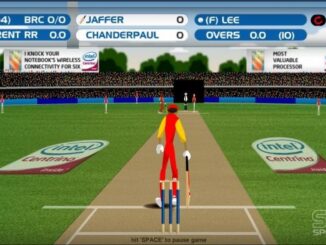
Cricket is a rather odd sport, something that even the die-hard cricket fan would admit. Therefore, it comes as no surprise that cricket has many peculiar and even quaint expressions. For instance, you can have a ‘leggie’ bowling a googly to a night watchman with an offside field in place. The batsman plays a forward defensive shot and pops a catch to silly mid-on.
Clearly, cricket’s terms and expressions require some explanations. You may even come across references to cricket in everyday use like “it’s not cricket” or “sticky wicket”. Indeed, it is impossible to cover all of cricket’s unique terms and expressions in a few hundred words but one can come close enough.
Field of play
Pitch- Also known as the wicket; it is the normally bare rectangle in the middle of the field
Wicket- Oddly, this refers to the pitch, the stumps and bails or the more abstract concept of a batsman’s dismissal.
Crease- Please “bat in your crease” because batting out of the crease- the white line on the pitch, in front of either wicket- has attendant risks.
Boundary- Usually a rope used to define the field of play.
Field positions
Nearly all of the field positions have odd names. A guide to fielding positions is necessary for the uninitiated. Some of the peculiar names that one might come across when following cricket include: Silly mid-on and Silly mid-off, Fine leg, Square leg, Midwicket, Third Man, Point, Slips and Gully. The offside is the side of the field that the striker faces, while the leg side is opposite side.
Types of matches
First-class: A First class match is an official cricket match that is played over a multiple days (three for a minimum) and allows two innings per team.
Test match: A Test match is a five-day First class fixture played between countries that have Test match status.
One-day match: These are known as “List A” fixtures- comprising official matches at international and domestic level. International matches in this format are One-day Internationals.
Twenty20 or T20: These are official 20-overs per side matches. International T20 matches are Twenty20 Internationals.
Methods of dismissal
When a batsman is “run out”, that means that the fielding team hit the wicket at the end he was running to before he had the chance to cross the crease. “LBW” (leg before wicket) is where the umpire adjudged that the ball would hit the stumps if it did not hit the batsman’s pad first- with other somewhat complicated considerations.
A batsman who is “bowled” has the ball he faces hit the stumps to dislodge a bail(s). When commentators say that a batsman is bowled neck and crop, the stumps are normally uprooted or splayed, usually after the batsmen missed the ball. A batsman is “stumped” when he attempts to play the ball and is out of the crease when the wicketkeeper removes the bail or uproots the stump.
You can get a full library of cricket terms and expressions. If you try to remember all of them, you might even prevent memory loss. The list of cricket terms and expression is so long that we should call it “Crickonics”. So, do not get caught out when following cricket, stumped or Yorked by cricket trivia- get with your Crickonics!
Unless otherwise stated, PONIREVO and/or its licensors DO NOT own any intellectual property rights in the website and material on the website. Majority of the site’s content has been scraped and auto posted by a third party artificial intelligence program —– PONIREVO Creation Team.
Proudly WWW.PONIREVO.COM



